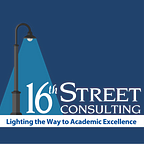Now What? Floyd, Chauvin, Race, Police, and Education
It would be reasonable for some folks to think that the announcement of the Chauvin verdict brought much needed relief to a country and to the Minnesota community, in particular. Some of those people were surprised when the news of the verdict did not have that effect. After all, wasn’t justice served? Didn’t Derek Chauvin’s conviction on all three counts, after a very brief deliberation, show that the system worked?
No. No it didn’t.
There is no getting around the fact that this incident would not have happened, in the first place, if Floyd were white. There is no getting around the fact that a conviction does not bring Floyd back to life or restore his family. There is also no getting around the fact that the conviction of Chauvin represents an infinitesimally small percentage of police convicted for killing unarmed black citizens — less than 1%.
Pointing to an outlier conviction as proof that the system works is a deeply flawed pattern of thinking. On the contrary, it highlights just how broken the system is. A police office can be convicted for killing an unarmed black man, but in order for that to happen, it must be on video, the police office must be egregious in his indifference to human life, there must be multiple attempts by white bystanders and first responders to intervene, and thousands upon thousands of people around the world must express outrage.
The Chauvin conviction is not a moment for relief. It is not a moment to ease up. The Chauvin conviction merely illuminates just how ridiculous the standard is for the conviction of a police officer in a killing of an unarmed black man. This is the moment to ramp up efforts to reform the system.
As educators, we often wonder where this leaves us. Of course we have a bit of a needle to thread. Our Black and brown children not only watched the trial, but they also live some of the same experiences. To ignore this event is to deny them some elements of their identity. However, we also want to be careful not to trigger, or re-traumatize a student with any of the content. We know that some of our white students and their families will want this to be ignored or at least treated “neutrally” by describing systemic racism as something “some people feel” but that there is disagreement about.
Our advice to all teachers on this topic is this — you need to talk about the Chauvin trial and not in the isolated context of a single murder and a single conviction. You need to help your students find ways to describe what is happening in the society around them, or why it’s not happening in their particular community, but in another one down the road (brush up on redlining and segregationist housing policies if you are not already familiar with them). Be sure to give students an out to speak with a counselor or someone else if they feel the conversation triggering for them. And do not get into the “some people believe” quagmire. The data is overwhelming. At this point, saying “some people believe that Black people are treated differently by police” would be the equivalent of saying “some people believe that there is a force called gravity that holds matter together.”
Some out there are suggesting that if you find yourself unable or unwilling to have this conversion with your students, that you should help them find another adult in the building who can. It is our suggestion that you use your ability to have this conversation as a litmus test for whether or not you belong in the teaching profession. Being able to have this conversation represents a basic level of care for a significant number of young people. If you are unable to have it, get skilled quickly. If you are unwilling, get into a profession where that kind of callous discrimination is allowed.
The time is always right to do what is right.
— Martin Luther King Jr.
